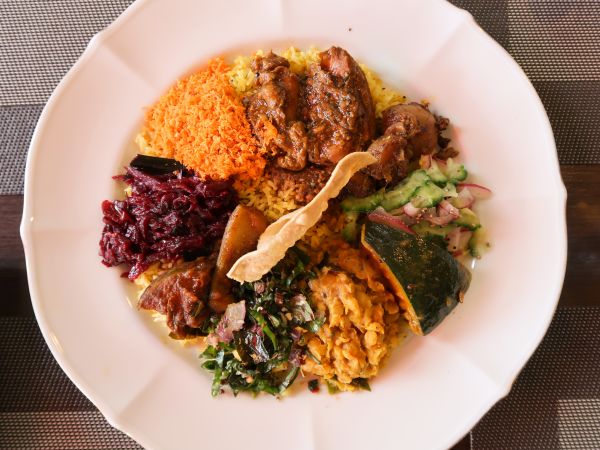
July 9, 2021
Tokyo’s Sri Lankan Cuisine 101
Rediscovering Sri Lankan food in Tokyo with two of the city's top Sri Lankan chefs
By Fengyi Hu
Sampath Bandara, the Sri Lankan executive chef at the Embassy of Denmark in Japan, has set a few special research projects for himself: One, to visit all the Sri Lankan restaurants in Japan (there are just fewer than 50); two, to reintroduce Sri Lankan food to the metropolis.
When we talk about Sri Lankan cuisine in Tokyo, the first thing to pop into your mind is probably something closer to Indian curry at your local street food stand. Yet, according to Chef Sampath, that’s one of the biggest misunderstandings you can have about Sri Lankan cuisine.
Metropolis joined Sampath for one of his field research trips, this time heading to Roger’s Kitchen in Itabashi-ku, in order to not only rediscover Sri Lankan curry, but to get clued up on the other diverse classics Tokyoites are missing out on. Located in a quiet neighborhood 10 minutes away from Hasune Station, the restaurant is a true kakurega (hidden spot) for Sri Lankan cuisine. The restaurant is far more spacious than a typical Sri Lankan street food stand and is designed to host parties, family gatherings or even weddings. According to Chef Roger, who has lived in Tokyo for over three decades, his concept for the restaurant is to show Tokyo residents that Sri Lankan food is much more than just food stands.
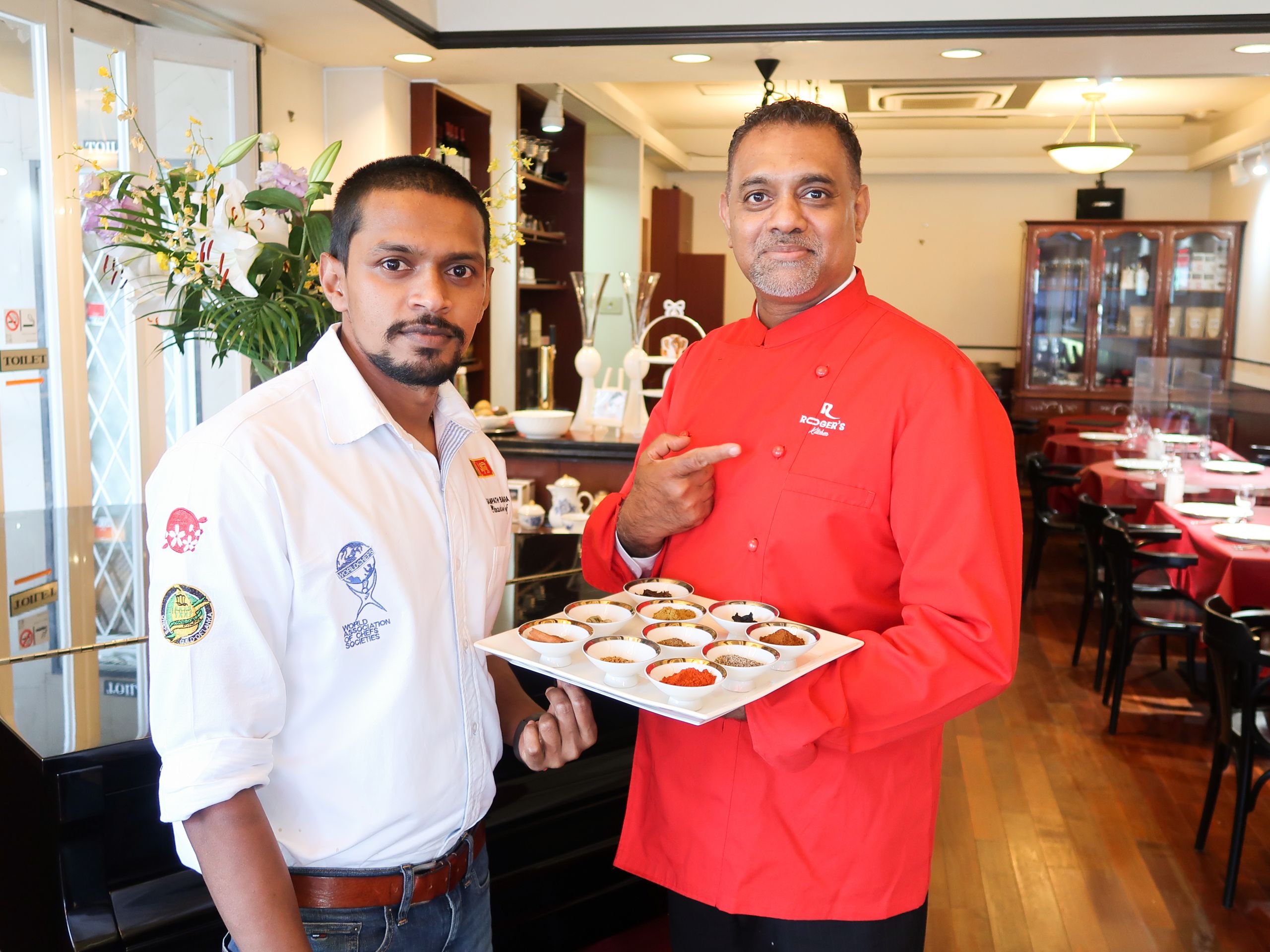
What do we talk about when we talk about Sri Lankan food?
No coconut = no Sri Lankan food. This is one of the first things Chef Sampath stressed. Coconut is one of the core building blocks of Sri Lanka cuisine. Coconut milk, coconut sugar, coconut oil… Sri Lankan uses the ingredient to its full extent and is, without a doubt, one of the key elements of today’s appetizer: Pol roti (coconut roti).
Pol Roti (Coconut Roti)
A kind of versatile flatbread, this dish is eaten for breakfast, lunch, dinner or even as a snack, and is also an edible utensil for your favorite dip. It is also a bit different from your regular flatbread, as this roti is infused with the mild sweetness of coconut. Topping it with some spicy sambals (chili sauce), this bite-sized coconut roti makes the perfect appetizer for today’s feast.
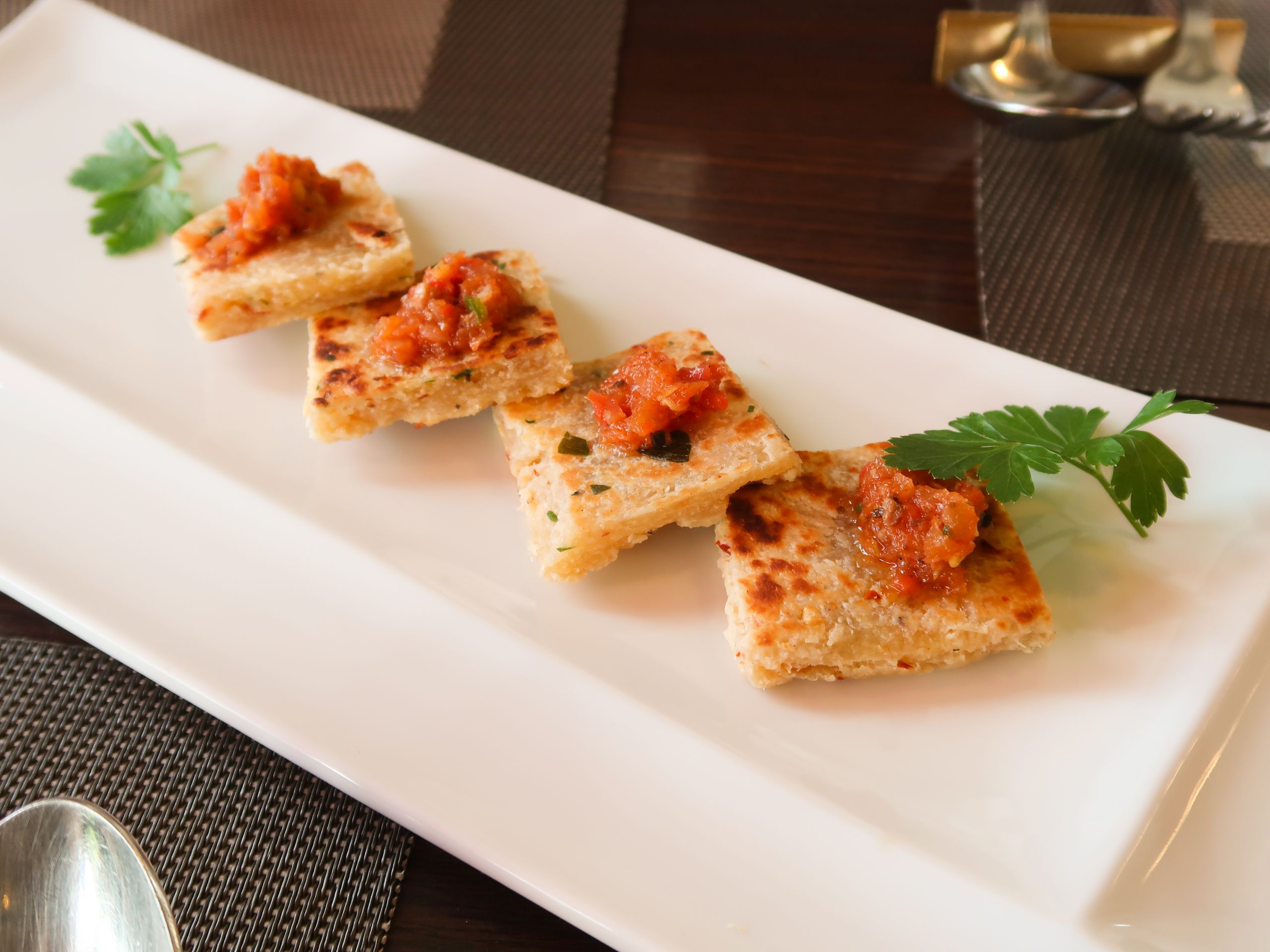
Vegetable croquette
Next up is another Sri Lankan classic. These vegetable croquettes are filled with banana blossom and topped with a fried curry leaf. The curry filling with the dipping sauce is punchy, yet surprisingly pleasing. As I was enjoying this spicy delight, Chef Sampath explained to me that curry leaf is another essence of Sri Lankan food and it also has some potential health benefits — including weight control.
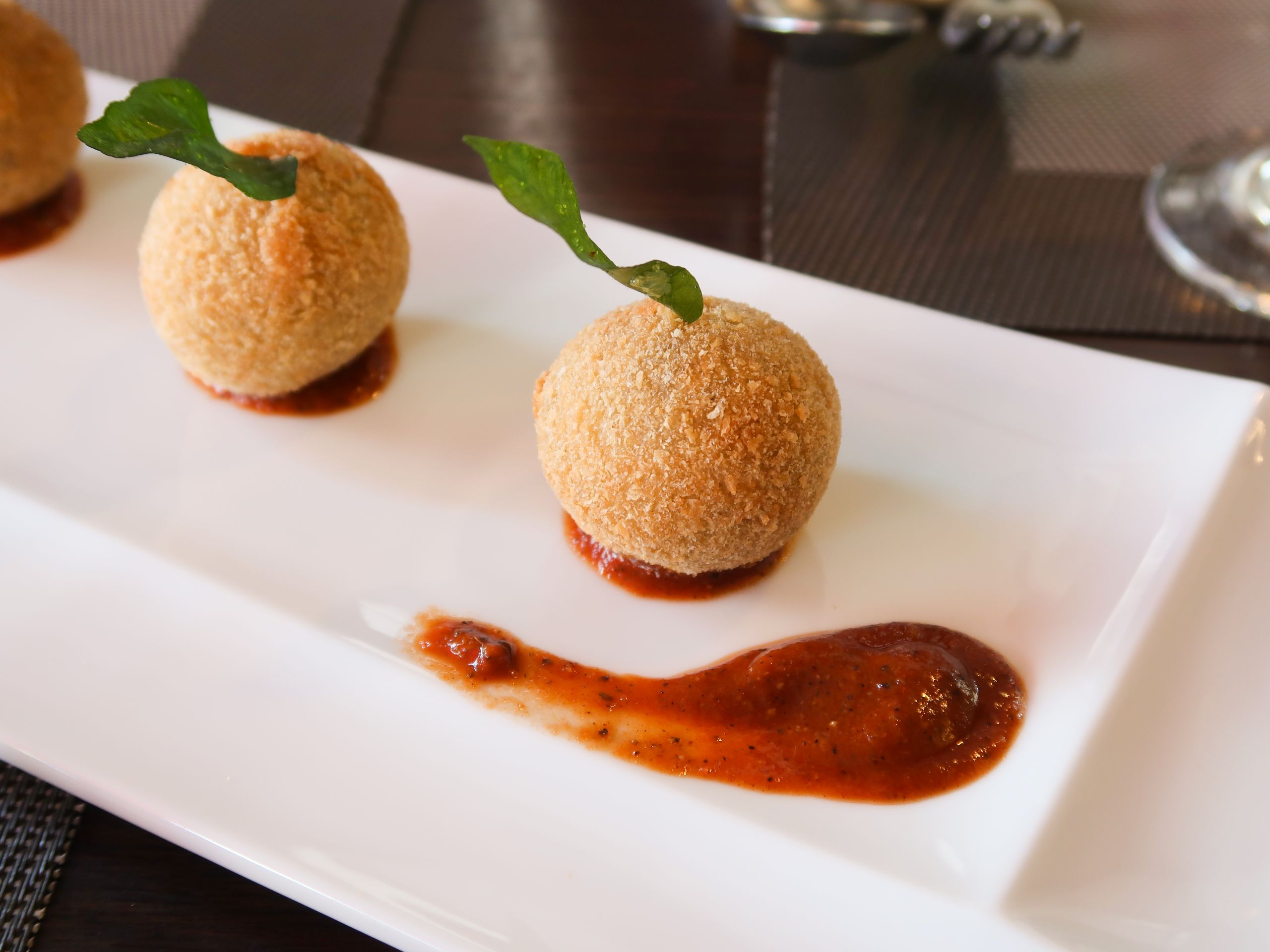
These two simple yet intricate appetizers make for a great introduction to today’s research topic: What are we really talking about when we talk about Sri Lankan cuisine?
Sri Lankan one-plate curry
One of the answers would be the Sri Lankan one-plate curry. If we were to describe Japanese or Indian curry, I would say they are closer to a Mark Rothko painting with giant color blocks of dark brown or yellow curry and white rice overlapping. But on the other side of things, Sri Lankan curry is more of an impressionist painting with smaller, bold brushstrokes, colorful yet balanced.
The flavor profile is also exceedingly diverse: sourness, sweetness, bitterness, saltiness and spiciness. What you can have for life, you can have it all on this one plate.
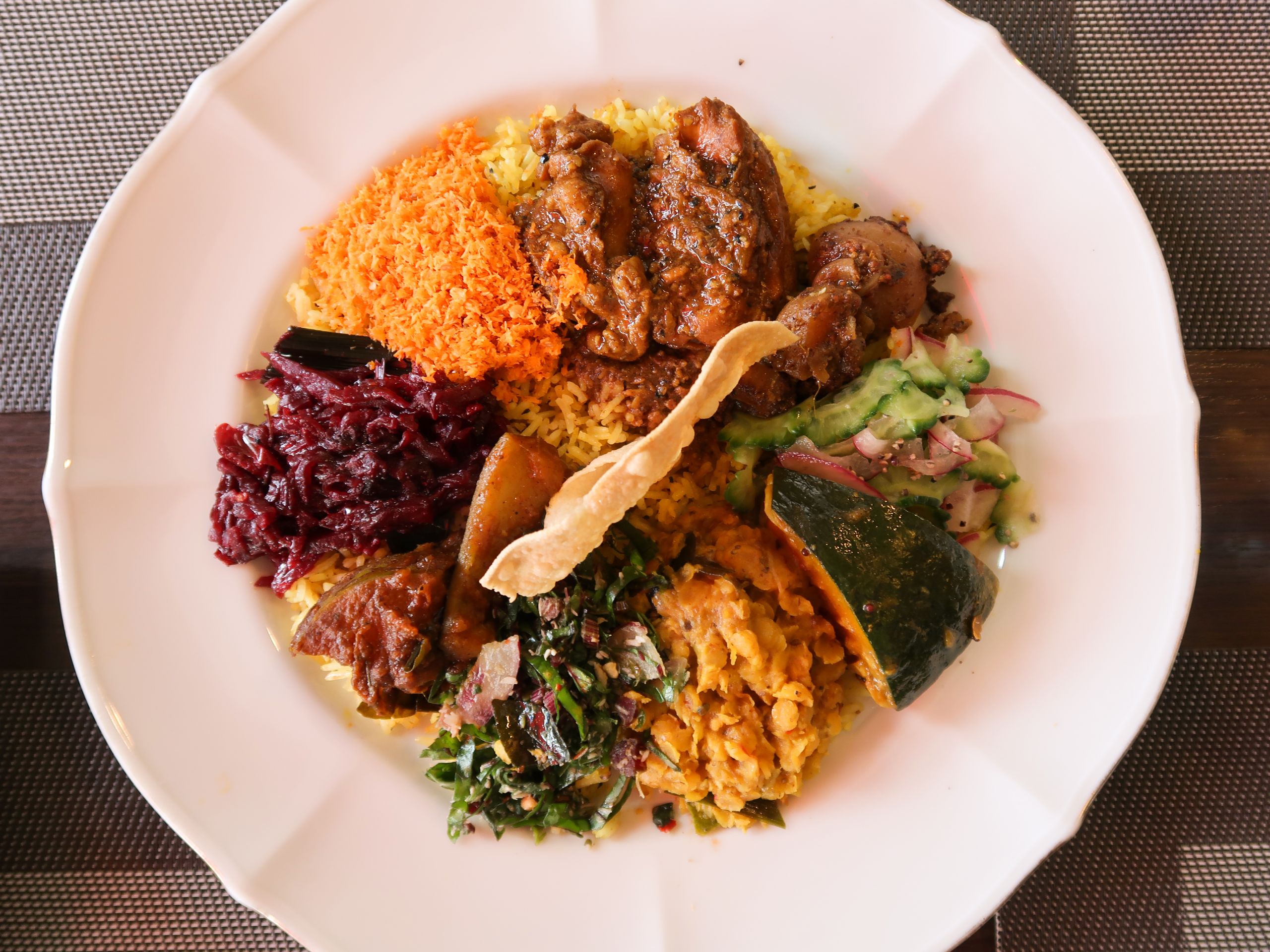
Every restaurant and household might have their own preferred curries, but for this particular plate — going clockwise starting from 12 o’clock — we have chicken, gooseberry, bitter melon, pumpkin, lentils, beets, mango, beets, coconut flakes. In total, it includes nine different types of curry. Underneath is a bed of rice cooked with turmeric.
This plate is indeed difficult for people like me who have “decidophobia.” Following both chefs’ recommendations, I decided to go for the rarest one: the gooseberry curry. Sourness hits first, then the spiciness cuts through, a very refreshing kick for a lazy afternoon. Not following a particular order, I jump to the lentils. For sure it is spicy, but the spiciness feels like it is from a totally different world than the previous. The beans are slightly squashed, so a bit of the sweetness also sneaks in.
I skipped a few blocks to try the bitter melon one. To be honest, I’ve never been a fan of bitter melon as the name has said it all. Yet, this thinly sliced bitter melon curry, tasting like a fresh bite of sour and juicy summer salad, overthrow all my biases. The natural bitterness is still present but not disturbing at all.
My fourth pick is the mango curry, which is also a first-time thing for me. According to Chef Sampath, fruit, such as unripe mango and jackfruit, are also common ingredients found in Sri Lankan curries.
While I keep taking bites, one question comes to my mind. In an age where people long for easiness and turn to cooking websites that are full of quick, one-pot recipes, do Sri Lankans still cook several different types of curry for each meal in their day just as part of daily life?
“Of course we do!” Chef Sampath replies, gesturing how he handles several pots at the same time in his home kitchen.
This is also exactly where Sri Lankan and Japanese people share the same ideology. Chef Roger explains that, contrary to Western cuisine in which there is a clear main dish with larger portions, washoku (traditional Japanese cuisine) dishes are small but diverse, ensuring you enjoy as many local and seasonal ingredients as possible. Just like Japan, Sri Lanka is also an island country that’s gifted by both the land and the sea. To cherish and fully embrace these natural resources, Sri Lankan people tend to make smaller portions so they can have a much more complex flavor experience when enjoying their daily meals.
Besides the rare ingredients on the plate, there is another hidden star: the Sri Lankan spice, Thuna-Paha. Just like coconut, you can’t cook Sri Lankan food without Thuna-Paha. Many people might mistake it for Indian Masala, but they are completely different spice mixes and it’s a strong part of what sets these two regional curries apart.
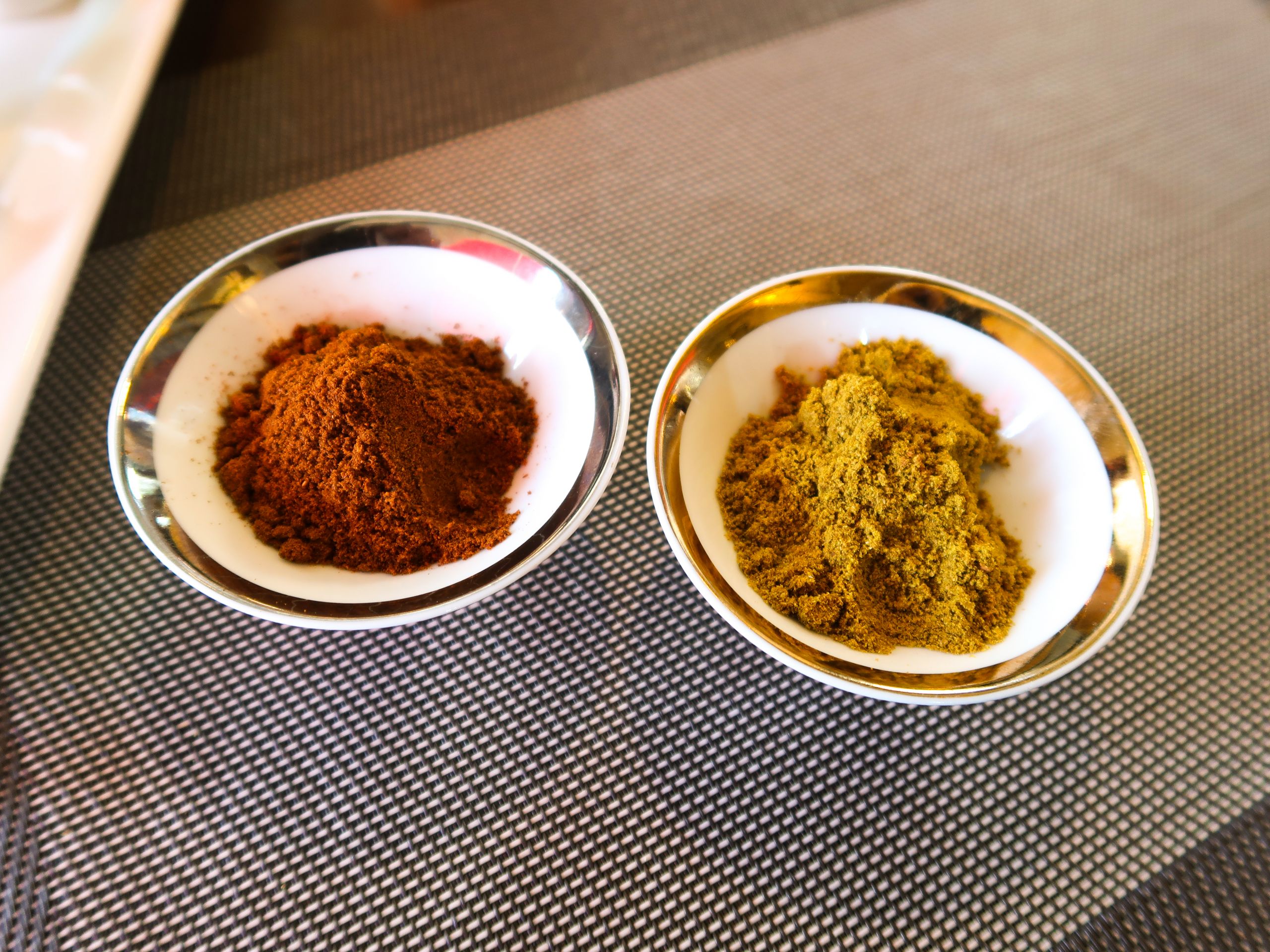
You might have also noticed that I haven’t talked about all of the nine curries on my plate (all of them taste great, of course). That’s some homework for you to discover when you go try it for yourself. Now, let’s move on to the next one.
Lamb Biryani
Chef Sampath ordered a lamb Biryani. I’m first astonished by the size of it, then by the smell of it. The lamb leg is soaked in water for three days so even the pickiest eater would fail to detect any gamey taste from the meat. The lamb is so tender it just falls off the bone. Chef Sampath was generous enough to share the dish with me for research purposes, but I am pretty sure any other meat lover would not be so willing to share this meaty feast.

Knowing that this is my first time trying Sri Lankan food, Chef Roger brings out another signature Sri Lankan dish to surprise me yet again.
Hopper
This bowl-shaped pancake made with a combination of rice and coconut flour (yes, it’s coconut again) with a sunny-side-up egg at the bottom is called an egg hopper. It’s designed so that you tear the pancake and dip it in the egg yolk. Chef Sampath mentions that there is a special pan used to cook hoppers and it requires some experience and tricks to master the dish. The bowl is soft and warm when it’s fresh out of the pan. The starch melts away as I eat it, leaving a trace of sweetness and a hint of coconut flavor behind. Next time when you are tired of your TKG (rice topped with raw egg) for breakfast, try swapping the rice for the hopper.
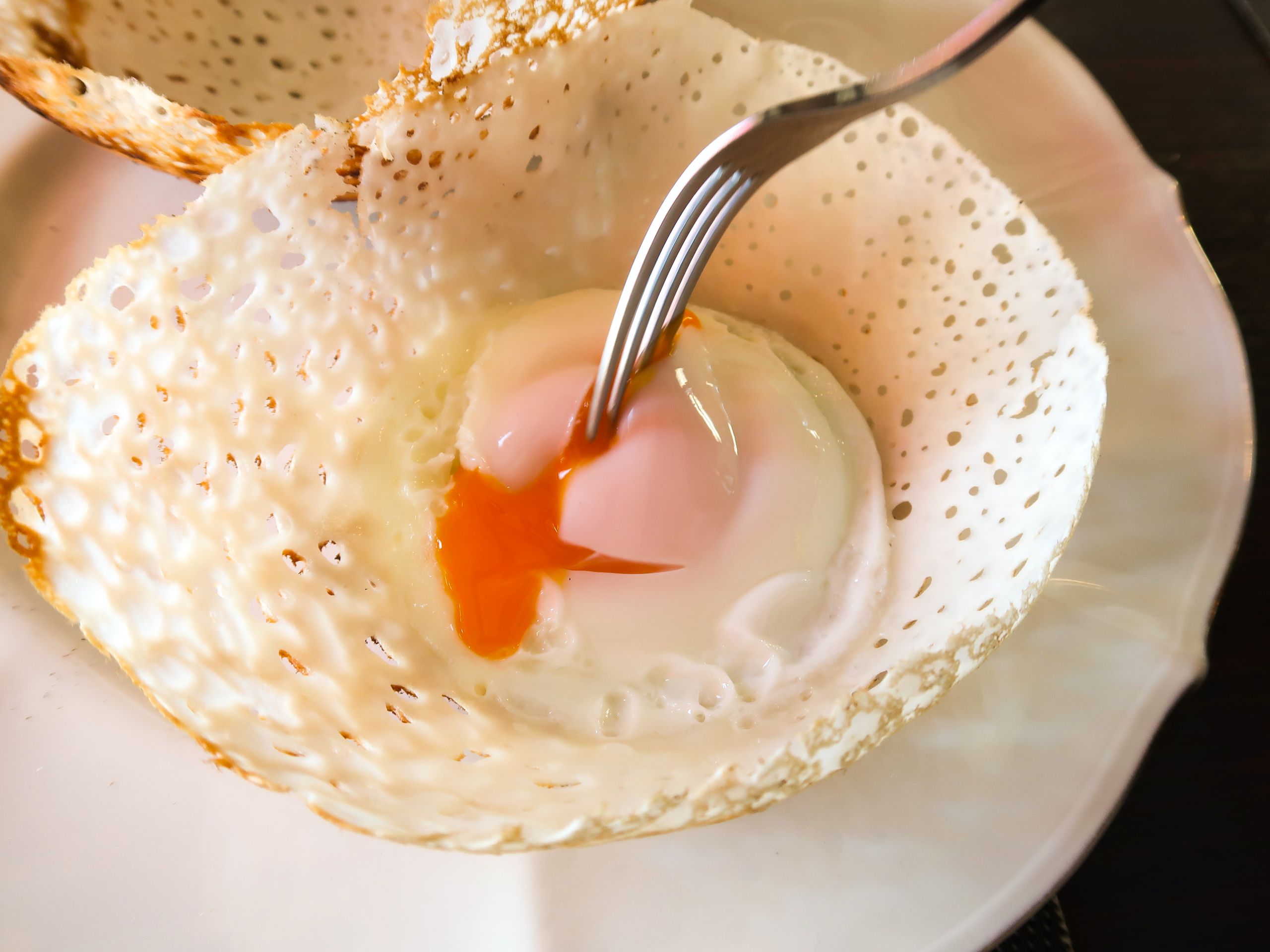
Now, it’s finally time for the desserts. To experience Sri Lanka at its best, I tried two, one traditional and one innovative.
Curd
The traditional one is called curd, which is the Sri Lankan version of yogurt. In fact, this dish is not on the restaurant’s menu, but Chef Roger is kind enough to put one together for our Sri Lankan food research. There are only two ingredients to this dessert: buffalo yogurt and kithul syrup. Kithul syrup is a type of honey extracted from the kithul palm tree that is local to Sri Lanka.
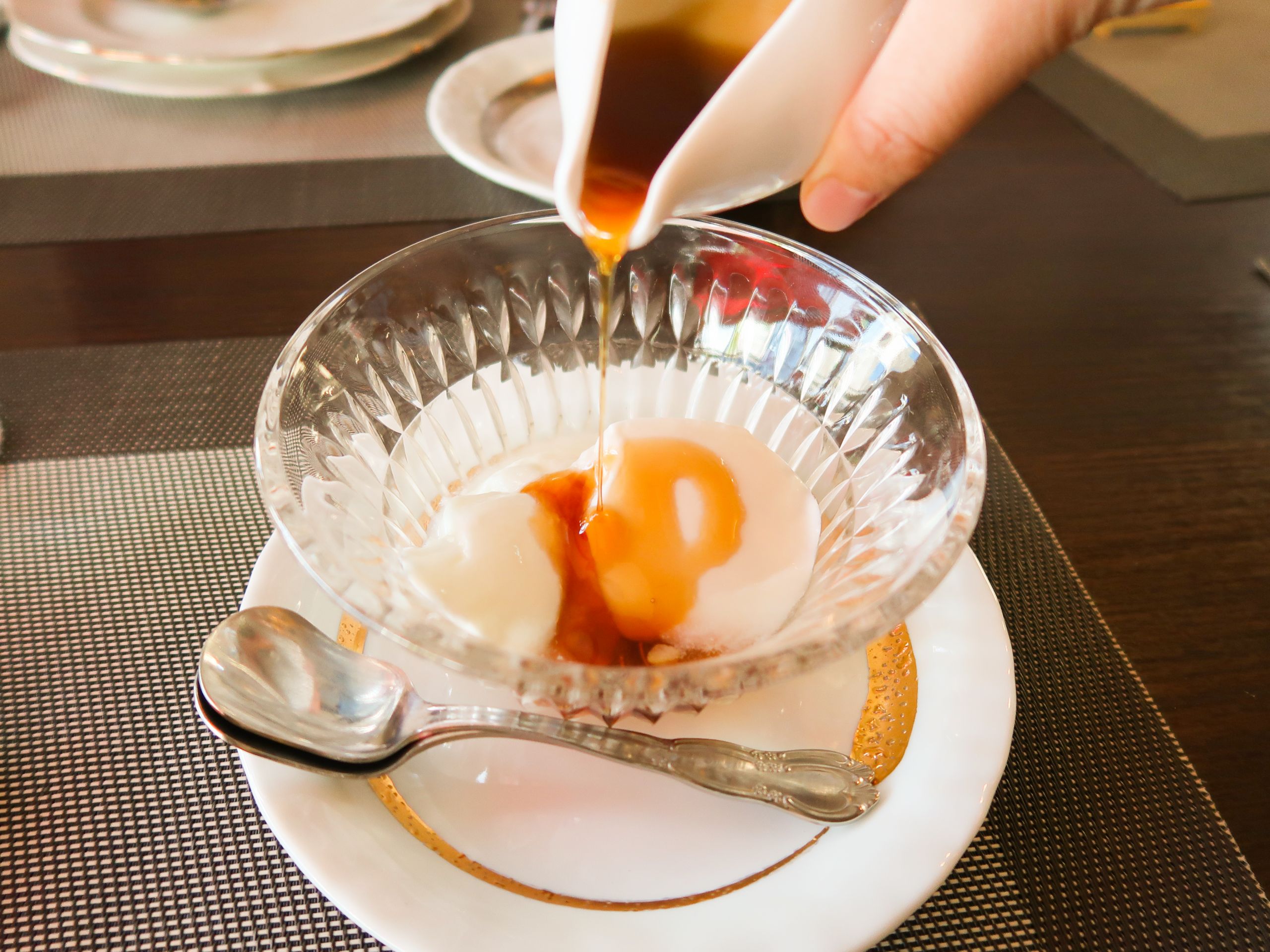
Unfortunately, it is difficult to find buffalo yogurt in Tokyo, so Chef Sampath usually uses regular supermarket yogurt as a substitute. But kithul syrup is actually sold at international supermarkets (e.g. National Azabu) and produce stores in Shin-okubo or Ueno. Scoop some yogurt and drizzle some kithul syrup on top. Done! It literally takes less than two minutes to whip up this dessert, so keep an eye out for the magical syrup in your local organic stores and give it a try.
Chef Roger’s original “One Plate of Sri Lanka”
Last but not least, Chef Roger presents us with his very own “One Plate of Sri Lanka.” Coconut mousse in a chocolate shell, passion fruit and mango with cinnamon, this dessert pulls together all the most representational Sri Lankan fruits and ingredients into one, making it the perfect conclusion to today’s research.

Bonus: Sri Lankan tea
In between dishes, Chef Roger also served a variety of black tea from Sri Lanka for tasting. The tea is hot but the infused fruity aroma makes it a calming drink for the summer. It also cleanses your palate for the upcoming dishes. Yet, more importantly, in this tiny teacup is the essence of Sri Lankan food, culture and history.
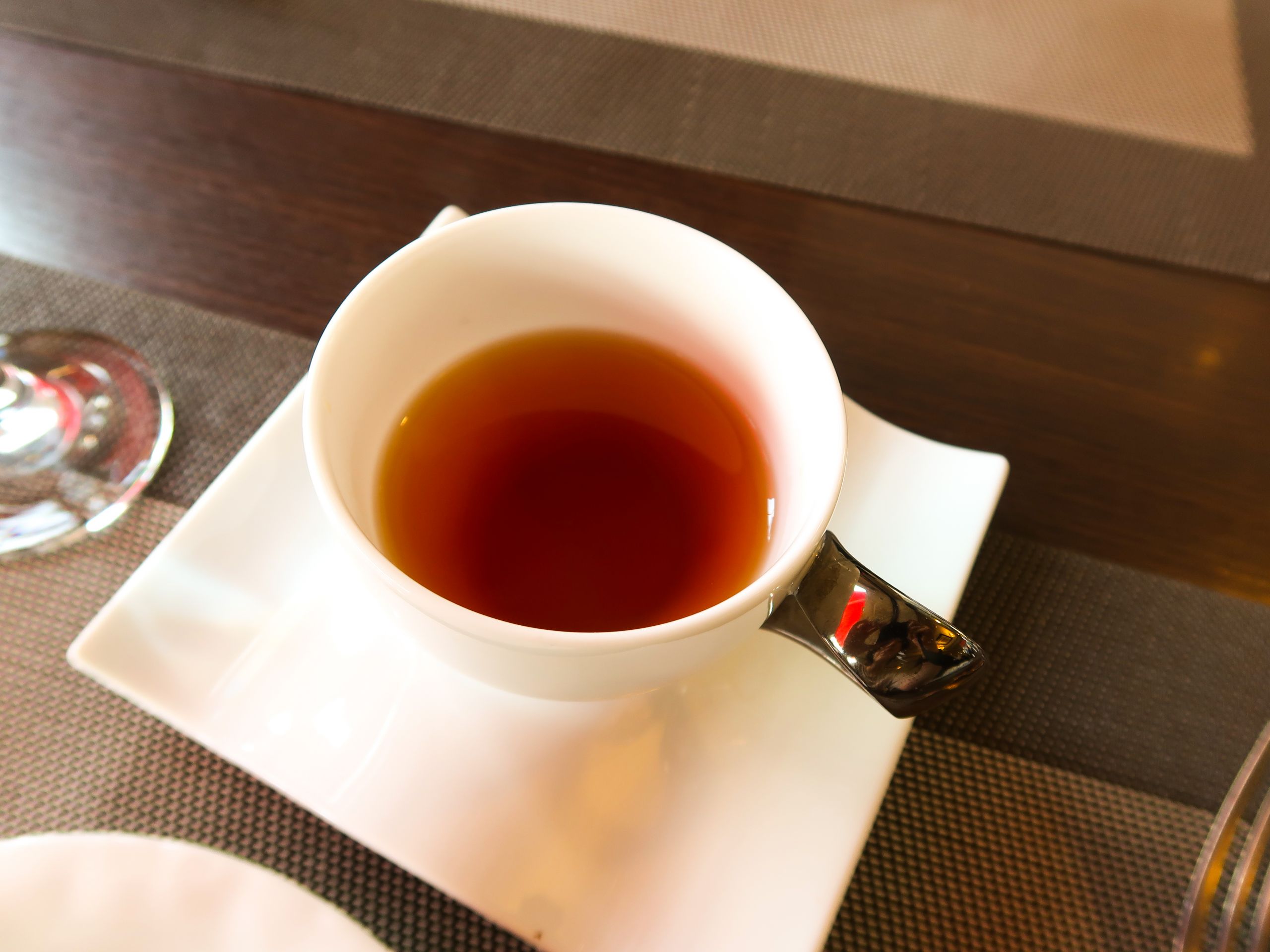
Here you have it, our first report for Sri Lankan food in Tokyo. During our lunch, there is another group of Japanese “researchers” investigating the same topic, and Roger’s Kitchen is their third stop. We exchanged information and talked about so many other great Sri Lankan dishes that we didn’t have time to taste and enjoy this time around. And that would be some further research for me to share with you in our “Sri Lankan food 102” in the future. In the meantime, you should go check out Roger’s Kitchen for yourself the next time you’re craving something new.
Roger’s Kitchen
1-12-12 Hasune, Itabashi-ku
www.rogerskitchentokyo.com/
03-6454-5765
Tokyo foodie? Also check out:

We Tried Tokyo’s Weirdest Ice Creams in One Day
Fried oyster ice cream? Here’s our honest opinion

Tokyo’s Top Peruvian Restaurants
A guide to the best spots in the city

The Sourdough Enthusiast’s Guide to Tokyo
Hunting for the crunchiest, nuttiest loaf in the capital







